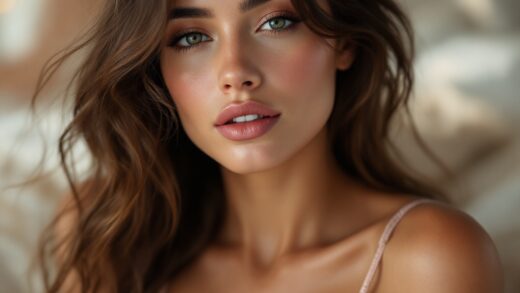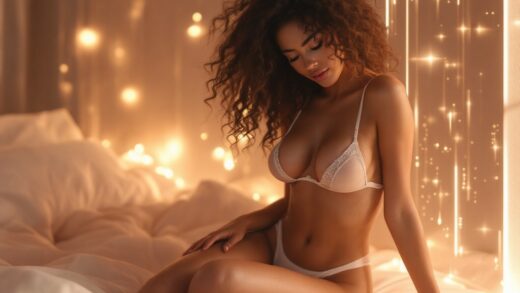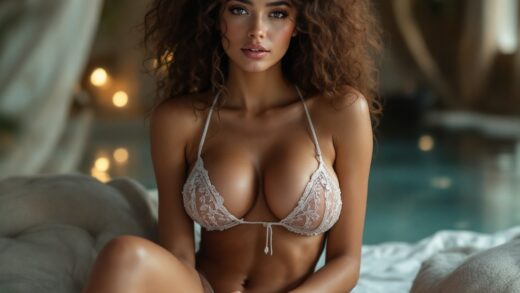Art has long served as a powerful avenue for individual expression, prompting society to challenge conventions and delve into the complexities of human experience. Recently, the advent of technology has significantly transformed the art creation landscape, with neural networks emerging as a revolutionary tool. These advanced algorithms replicate the intricate workings of the human brain, learning from expansive datasets to generate distinctive works. But what occurs when these neural networks delve into the realm of erotic artistry? This intriguing junction of AI nudify and sensuality brings forth both opportunities and challenges, merging technology with creative expression in groundbreaking ways.
As we investigate the impact of neural networks in producing erotic art, we uncover a compelling tale of innovation, collaboration, and ethical dilemmas. This article seeks to illuminate how these cutting-edge AI systems function, what renders AI-driven erotic art captivating, and the vital considerations that both creators and audiences must consider. Additionally, we will ponder the potential futures of erotic art in the age of AI, encouraging conversations about the delicate equilibrium between innovation and accountability.
What Are Neural Networks?
Neural networks are foundational elements of artificial intelligence, crafted to emulate the operations of human brains through pattern recognition and decision-making. Fundamentally, these systems comprise layers of interconnected nodes, akin to neurons, that process data inputs and learn from them. Over the years, advancements in neural networks have revolutionized various fields, including healthcare, finance, and significantly, the art world. Artists and technologists are beginning to harness this capability, paving the way for a new era of creativity.
When applied to art, neural networks can generate visuals that range from the fantastical to the stunningly lifelike, seamlessly integrating diverse styles and influences. As AI technology advances, the line distinguishing human-created art from AI-generated pieces continues to blur, sparking ongoing discussions about creativity and originality. This embrace of innovation offers a refreshing outlook on what constitutes art today, particularly when intertwined with themes of eroticism.

How Neural Networks Create Artwork
The endeavor of creating art with neural networks encompasses several stages. To begin, artists input a variety of artworks into the neural network, which starts to scrutinize the elements present in these images—from colors, styles, and compositions to the subtle intricacies that render each piece unique. This learning phase is essential; the neural network progressively gains the ability to replicate these characteristics in its outputs.
After this training period, the network produces new visuals based on the absorbed patterns. This can lead to the emergence of striking and novel erotic art that challenges traditional aesthetics. Technologies such as Generative Adversarial Networks (GANs) are crucial in this process, fostering an ongoing interaction between the image generator and a discriminator that assesses their quality.
| Components of Neural Networks | Role |
|---|---|
| Input Layer | Receives data inputs for analysis |
| Hidden Layers | Processes and modifies input data into key features |
| Output Layer | Produces the final output (the artwork) |
The Unique Appeal of AI-Generated Erotic Art
AI-generated erotic art captivates audiences for numerous reasons. Firstly, it offers a fresh lens on sensuality and human desire, often transcending traditional frameworks and boundaries. Secondly, as neural networks experiment with various styles and techniques, they extend creative limits, prompting viewers to reconsider conventional norms related to eroticism in art. This broad exploration of aesthetics has resulted in a diverse range of expressions that challenge social taboos.
Another fascinating element is the synergy between human and AI creativity, where artists collaborate with neural networks to elevate their artistic visions in fresh, innovative ways. Some creators feed their ideas and sketches into the system, allowing the AI to bridge gaps, resulting in works that neither could achieve independently. This collaborative endeavor raises intriguing questions about authorship, as the distinctions between human creativity and algorithmic generation become less clear.
The Fusion of Human and AI Creativity
An increasing number of artists are embracing this collaboration, recognizing that neural networks can act as a source of inspiration rather than merely a replacement. This shift in mindset allows for a more profound examination of themes and styles. Yet, it brings forth crucial debates regarding ownership and the worth of the produced artwork. Critics express concerns over whether an AI can genuinely be deemed an artist or if that title should remain solely with the human creators who navigate the process.

Ethical Considerations in AI Erotic Art
The rise of AI-generated erotic art introduces a series of ethical dilemmas. The potential for misuse—such as generating explicit material without consent—raises significant moral issues. This highlights the urgent need for guidelines governing the creation and dissemination of AI-produced erotic art, advocating respect for individuals’ rights and the dignity of the portrayed subjects.
Moreover, conversations regarding the impact of AI technology on artistic integrity are of utmost importance. Artists need to tread lightly within this complex terrain while promoting a culture of accountability. As the art community grapples with the implications of intertwining traditional artistic expressions with cutting-edge technologies, this dialogue remains crucial.
Future Prospects of Neural Networks in Erotic Artwork
Looking ahead, the role of neural networks in the production of erotic art is poised to evolve in tandem with technological advancements. Innovations in machine learning and AI capabilities could unlock new pathways for artistic exploration, broadening the definitions of erotic art. Emerging trends may involve greater integration of audience inputs, allowing them to collaborate with neural networks.
Additionally, we might witness cross-disciplinary partnerships where artists, technologists, and ethicists unite to examine the frontiers of AI in erotic art. Future AI advancements could unveil entirely new styles or methods, showcasing the creative potential that lies on the horizon. As this field propels forward, maintaining a conversation about the ethical ramifications of these advancements will be essential, all while celebrating the transformative capabilities of art.
Conclusion
In conclusion, the incorporation of neural networks into the realm of erotic art signifies a substantial transformation in both technology and artistic expression. By fusing human creativity with sophisticated algorithms, artists are redefining what is achievable in terms of sensual and erotic exploration within visual narratives. While the future brims with potential, it is vital to approach these advancements with a thoughtful eye on the ethical considerations involved. Achieving a harmonious balance between creativity and responsibility will propel the evolution of this captivating convergence of technology and art.
FAQ
- What is a neural network in layman’s terms?A neural network is a computer system designed on the model of the human brain that processes and learns from information to generate outputs, such as images or sounds.
- Can anyone produce erotic artwork using neural networks?Absolutely, with the right tools and platforms, anyone can experiment with AI art generation involving erotic themes.
- Are there legal considerations surrounding AI-generated erotic art?Indeed, there are complexities regarding copyright, consent, and the portrayal of explicit content that must be carefully addressed.
- How can artists gain advantages from using neural networks?Artists can unveil new avenues of creativity, boost productivity, and stretch the boundaries of traditional art forms by integrating neural networks into their practices.
- Is AI-generated erotic art regarded as genuine art?This remains a subjective topic, often sparking debate within artistic circles; many, however, contend that the intention and creativity behind the work validate its classification as “true” art.


